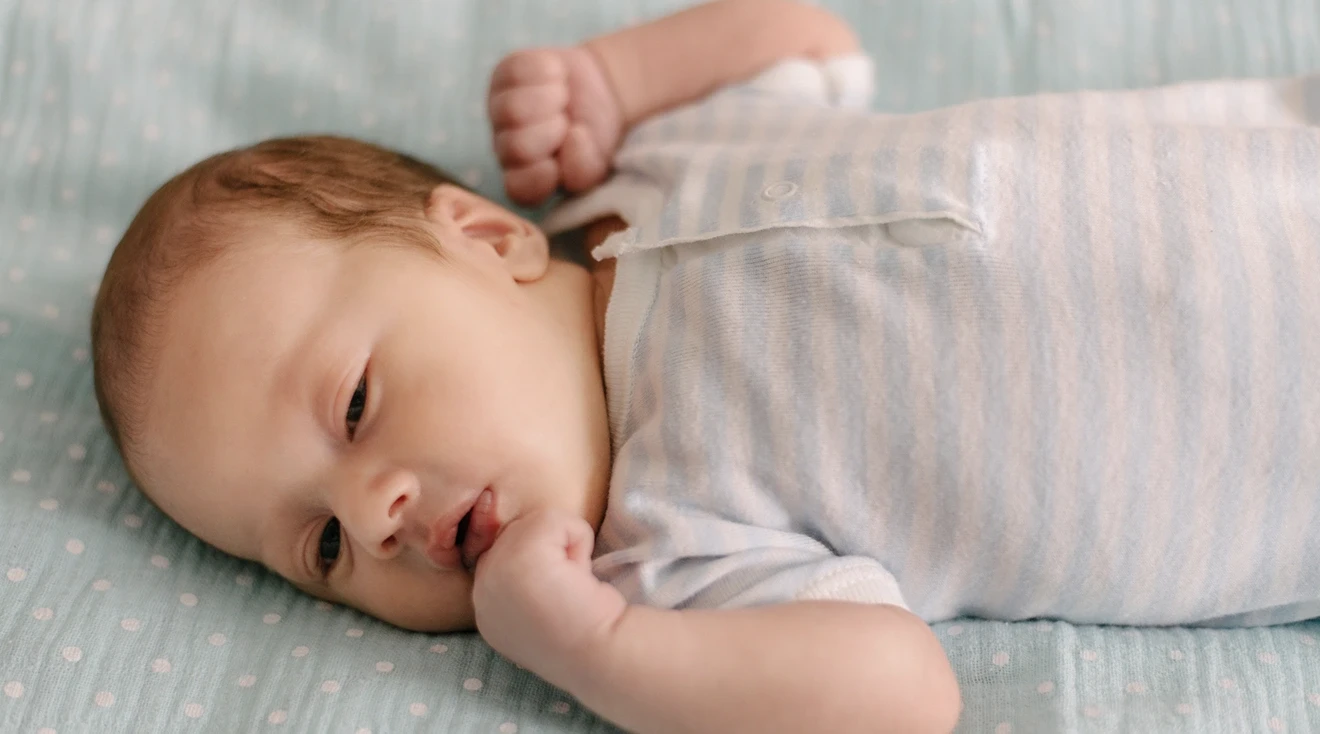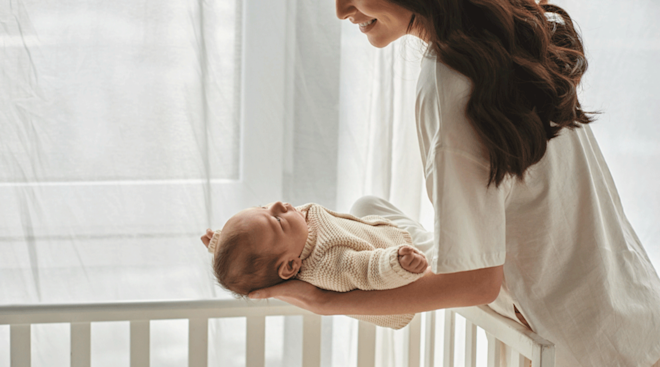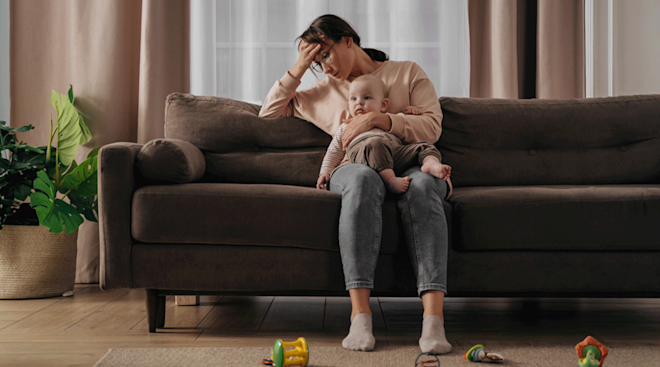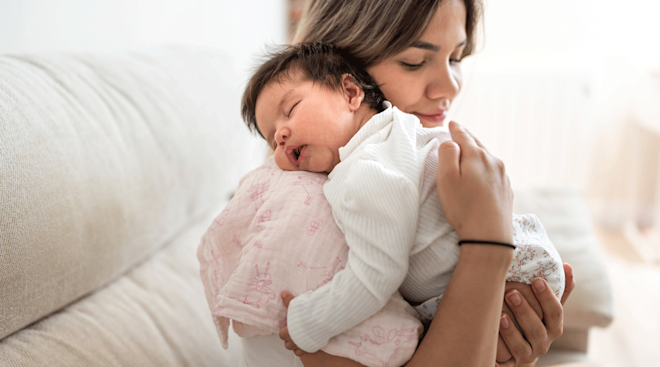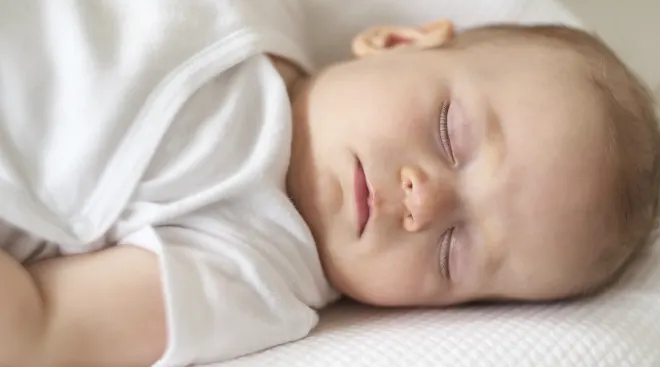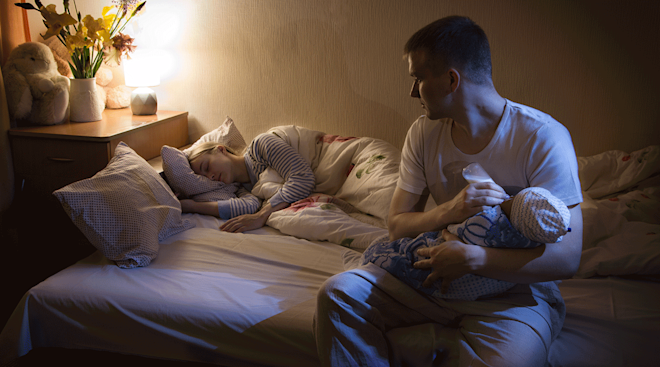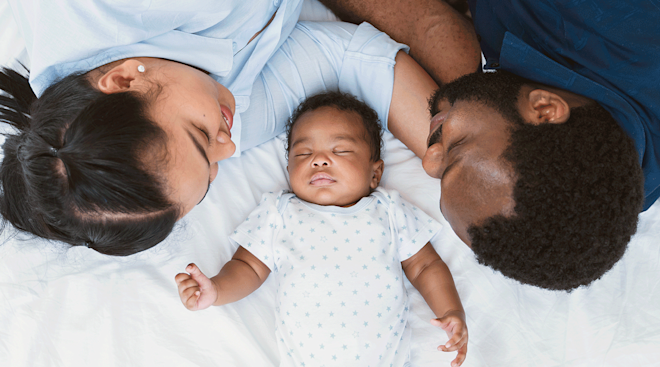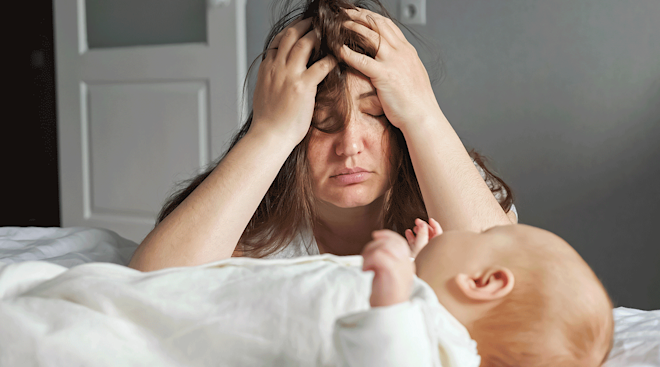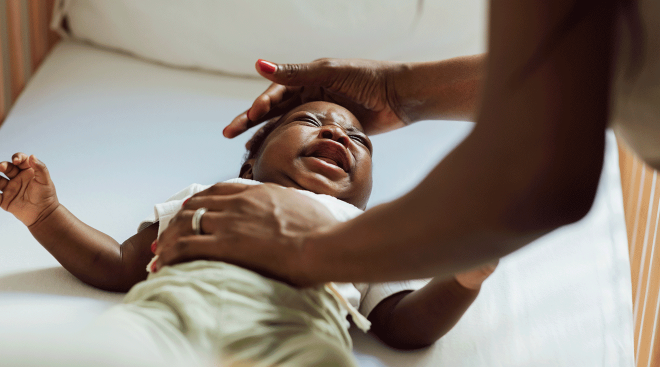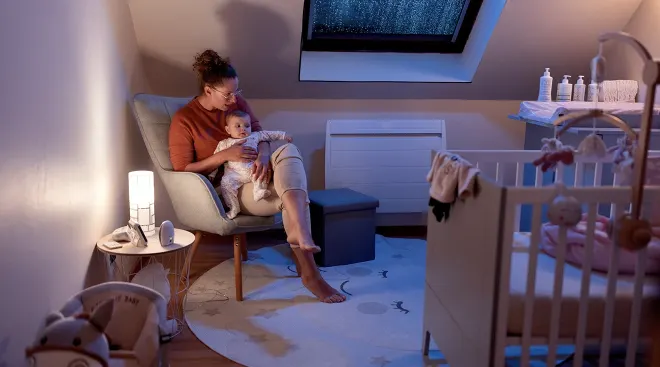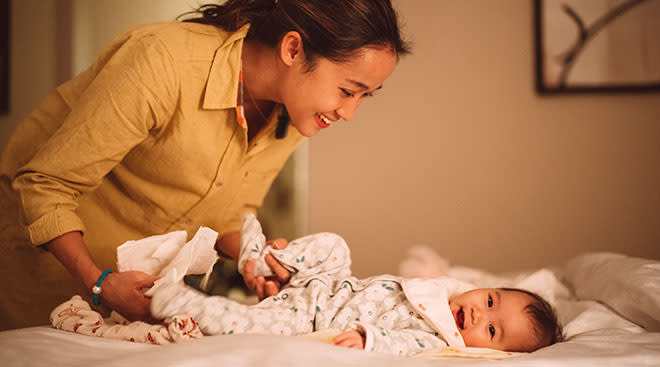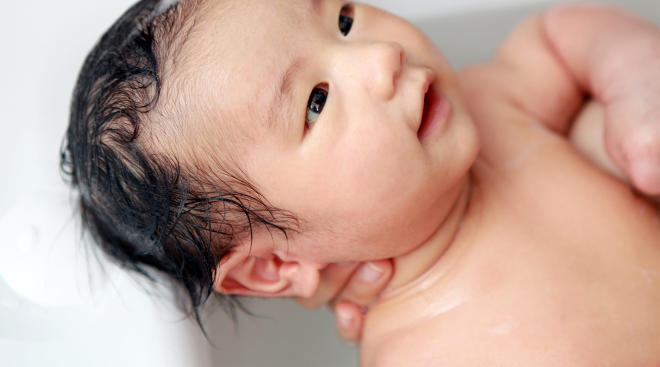How to Put Baby Down ‘Drowsy but Awake'
If you’ve ever read a parenting book you’ve likely come across the phrase “drowsy but awake.” As in, “be sure to put baby down ‘drowsy but awake’ at bedtime.” But, as many parents can attest, this simple-sounding advice is often anything but. So what does it really mean? And how on earth can you accomplish this feat? Whether you’re already in the thick of baby sleep (or lack thereof), or simply looking to get ahead of the learning curve, we’ve got tips and tricks to quell any sleep-related stress. Read on for expert advice and words of wisdom.
While it sounds simple enough in theory, putting baby down drowsy but awake can be a confusing task for new and experienced parents alike. The idea is that, rather than rocking or nursing baby to sleep, you’re observing their sleep cues and paying attention to baby wake windows in order to put them to bed when they’re tired enough to fall asleep, but not yet snoozing. (Of course, always make sure to place baby on a flat surface to sleep that’s free from blankets, pillows, stuffies and other items.)
Lynelle Schneeberg, PsyD, a clinical sleep psychologist at Connecticut Children’s Hospital and author of Become Your Child’s Sleep Coach, notes that the word “drowsy” can be a bit misleading. “The important thing is for babies to learn how to go from fully awake to fully asleep in the crib,” she says. “If you row the canoe for them almost all the way to shore, that’s not going to do the trick; babies have to learn how to row their own canoe to dreamland.”
There are good reasons for getting baby to bed before they’re passed out cold. “The goal of putting down baby drowsy but awake is to avoid sleep associations,” explains Kelly Fradin, MD, FAAP, director of pediatrics at Atria Institute and author of Advanced Parenting: Advice for Helping Kids Through Diagnoses, Differences and Mental Health Challenges. “If you hold baby until they fall fully asleep, and then transfer them to the crib or bed, what we see is that the child looks for the comfort that enabled them to fall asleep to return to sleep.”
Babies sleep in cycles of about 45 minutes, and often rouse in between; the ultimate goal is to make it a seamless transition so they learn to consolidate their sleep. But if they’re used to falling asleep with the help of a creature comfort, like a bottle, nursing or rocking, there’s a greater likelihood that they’ll look for that same comfort every time.
Postpartum doula Laura Howells, IBCLC, a lactation consultant in the San Francisco area, says that once babies get the hang of falling asleep independently, they also sleep for longer stretches. “As a lactation consultant, I like this strategy because it doesn’t push skipping feedings,” she says. “It’ll only [happen] because the baby is sleeping well and doesn’t feel hungry enough to wake. This helps to maintain a good milk supply and a thriving baby.”
Another reason to get in the habit of putting baby to bed while they’re still awake is that if they fall asleep in your arms and rouse in their crib, it can be jarring to wake up somewhere else— especially once baby grasps the concept of object permanence. “Parents feel they’re helping their children by putting them to sleep and then sneaking away, but it creates a vicious cycle of mistrust and distrust for the child,” warns Nilong Vias, MD, a pediatrician at Sleepless in NOLA in New Orleans and medical review expert at SleepFoundation.org. “Imagine falling asleep on the sofa every night, but waking in your bedroom in the morning; that scenario is unsettling. That is precisely what the child experiences when they fall asleep in one situation and wake up in another.”
Nailing the whole drowsy-but-awake thing can be foundational in establishing good sleep hygiene. It’s part and parcel with creating a calming and predictable bedtime routine and teaching babies to become independent sleepers. Schneeberg usually starts to focus on this approach for babies starting around the time they’re 6 months old, but says that you can begin laying the groundwork from birth.
Knowing what drowsy but awake looks like and why it’s important is one thing; executing it is quite another. Some babies who are naturally good sleepers may adapt to this technique in a heartbeat, but for most it’s going to take time.
“What the advice needs to say is to practice drowsy but awake so that baby gets some acquaintance with the concept,” advises Macall Gordon, MA, senior lecturer at Antioch University and certified gentle sleep consultant. “It’s not going to magically work right away (or even at all) for many infants. The younger the baby, the more true this is.”
Howells likes to think of this as a gradual process. “Some parents will have to start by putting their little ones pretty much all the way to sleep in their arms, and then letting them wake a tiny bit as they’re placed into their bed,” she explains. At first, they may need a little back rub or hip rock to help them settle. “Gradually, the family can work toward baby being more and more awake as they’re placed into their bed, until they’re able to do their bedtime routine, place baby in their bed and then leave the room for baby to fall asleep on their own.”
In order for this whole drowsy-but-awake process to work, a consistent bedtime routine is crucial. “You can send a lot of cues that it’s bedtime with a routine that’s the same every night,” advises Schneeberg. “You want to give a lot of thought to two things: how are you concluding the routine, and is baby still fully awake when you put them in the crib?”
Since feeding often lulls infants to sleep, Schneeberg recommends putting that toward the beginning of your bedtime routine, especially for babies 6 months and older. That way, if they start to doze off, you can rouse them with a burp and diaper change. If it’s a two-parent household, and one caretaker is nursing, it can be helpful to have the other adult take over the rest of the bedtime routine after feeding. They might change baby’s diaper, put them in pajamas, sing a quick song and put baby into the crib awake. With time, baby will learn that this routine signals bedtime. As much as possible, Schneeberg recommends replicating this process for any middle-of-the-night wakeups as well.
Of course, this isn’t a one-size-fits-all solution. “This advice works great for babies who are hardwired to be good sleepers,” says Gordon. “Here’s what the advice doesn’t say: It doesn’t work for lots and lots of babies.” Your kiddo may take to being put down drowsy but awake like a fish to water. Others will get it in time. But, for some, it just won’t work. “I talk to parents every day who already feel like they’re failing because they try drowsy but awake with their newborn, and it’s a total bust. It shouldn’t be this way,” says Gordon. This is precisely why Schneeberg recommends practicing the skill in the first few months, but not necessarily expecting success for a while.
Like so many parenting tips out there, the whole drowsy-but-awake line of thinking doesn’t necessarily take into account personality and brain wiring. “Baby’s temperament directly dictates how much capacity they have to go to sleep from drowsy on their own,” argues Gordon.
Unfortunately, there’s no magic answer for baby sleep. So before giving up on putting baby to bed drowsy but awake, make sure you’ve given it a real chance.
Fradin suggests a technique she calls “the pause.” In other words, after putting baby in their crib, wait a beat. “What many parents see is that babies grunt, squirm and turn red when they’re laid down. It can be hard to tell if following this behavior, they’ll settle down to sleep.” Give it a minute. If baby seems upset, try putting a hand on them in the crib, and see if that’s enough to calm them.
For babies 6 months and older, Schneeberg follows a similar “check and console” model. Depending on baby’s age and temperament and your comfort level, you can stay in the room or leave and check on them at whatever frequency feels right. If they aren’t settling, parents can pick up baby, soothe them and put them back in the crib calmer but still awake. It may take many rounds of this before baby falls asleep; if it works, then each night should become easier and easier. Schneeberg has found that, for a typically developing child, it takes about three nights for a baby to get the hang of things.
If it’s not working, take a break and try again at a later time. “Who knows if baby is fending off an infection or some illness,” says Schneeberg. “When you get back to it, they’ll be that many weeks further along in their development. That’s a different kid at that point, and you may have success much more rapidly.”
As with any parenting advice, it’s important to use what works for your unique child and family. There are countless sleep training methods out there, and there’s bound to be a good deal of trial and error before you figure out the most effective approach for your situation. And, for those overtired parents who need some guidance, it doesn’t hurt to call in a professional baby sleep consultant for extra help. After all, there’s nothing better than a good night’s sleep.
About the experts:
Kelly Fradin, MD, FAAP, author of Advanced Parenting: Advice for Helping Kids Through Diagnoses, Differences, and Mental Health Challenges, is the director of pediatrics at Atria Institute and a mom of two. A graduate of Harvard College and Columbia College of Physicians and Surgeons, she has dedicated her career to caring for children with complex medical conditions.
Macall Gordon, MA, is a senior lecturer at Antioch University and a certified gentle sleep consultant in private practice as well as with the women’s telehealth platform Maven Clinic. She is a researcher, speaker and author specializing in the link between temperament and sleep. Gordon has a master’s degree in applied psychology from Antioch University and a BS in human biology from Stanford University.
Laura Howells, IBCLC, is a lactation consultant and postpartum doula who works with clients in the San Francisco Bay Area. Her areas of support include prenatal and postpartum support, massage and lactation services for breastfeeding and chestfeeding parents online and in person.
Lynelle Schneeberg, PsyD, is a sleep psychologist, the director of the behavioral sleep program at Connecticut Children’s Medical Center and a fellow of the American Academy of Sleep Medicine. She is also the author of Become Your Child’s Sleep Coach.
Nilong Vyas, MD is a pediatrician, public health specialist and board-certified sleep expert at Sleepless in NOLA sleep consultant service in New Orleans. She’s also a Medical Review Expert at SleepFoundation.org.
Please note: The Bump and the materials and information it contains are not intended to, and do not constitute, medical or other health advice or diagnosis and should not be used as such. You should always consult with a qualified physician or health professional about your specific circumstances.
Plus, more from The Bump:
Navigate forward to interact with the calendar and select a date. Press the question mark key to get the keyboard shortcuts for changing dates.
































